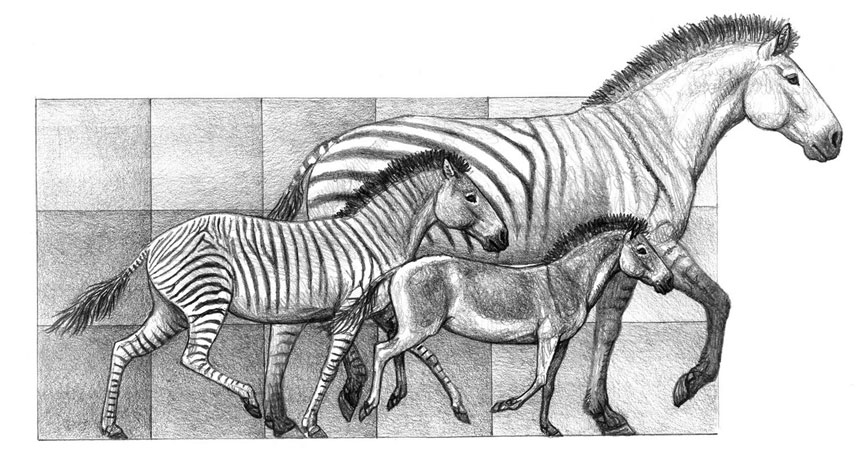
HORSE RACE As ancient horses rapidly diversified into new species, drastic changes in body size didn’t occur, despite the diversity found in the fossil record, a new analysis shows. (Three species from roughly 8 million years ago are shown.)
Mauricio Antón